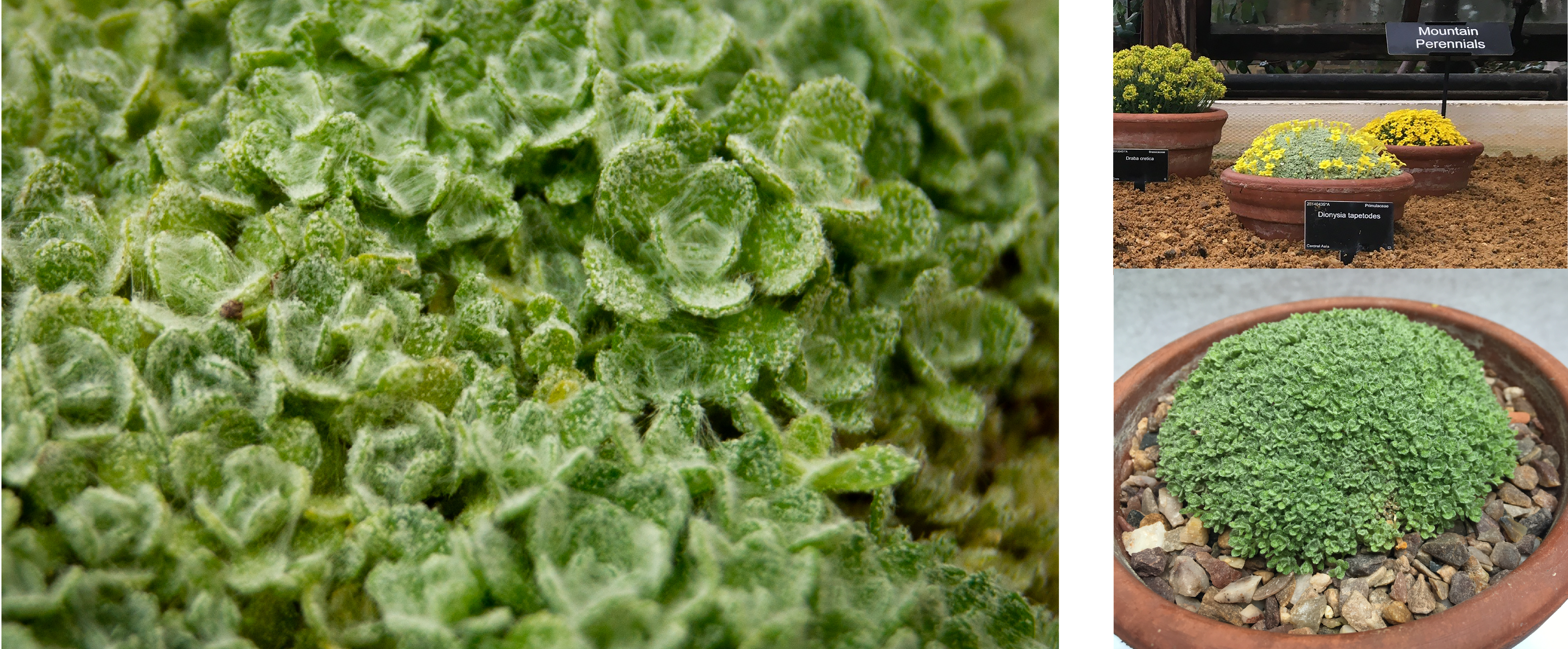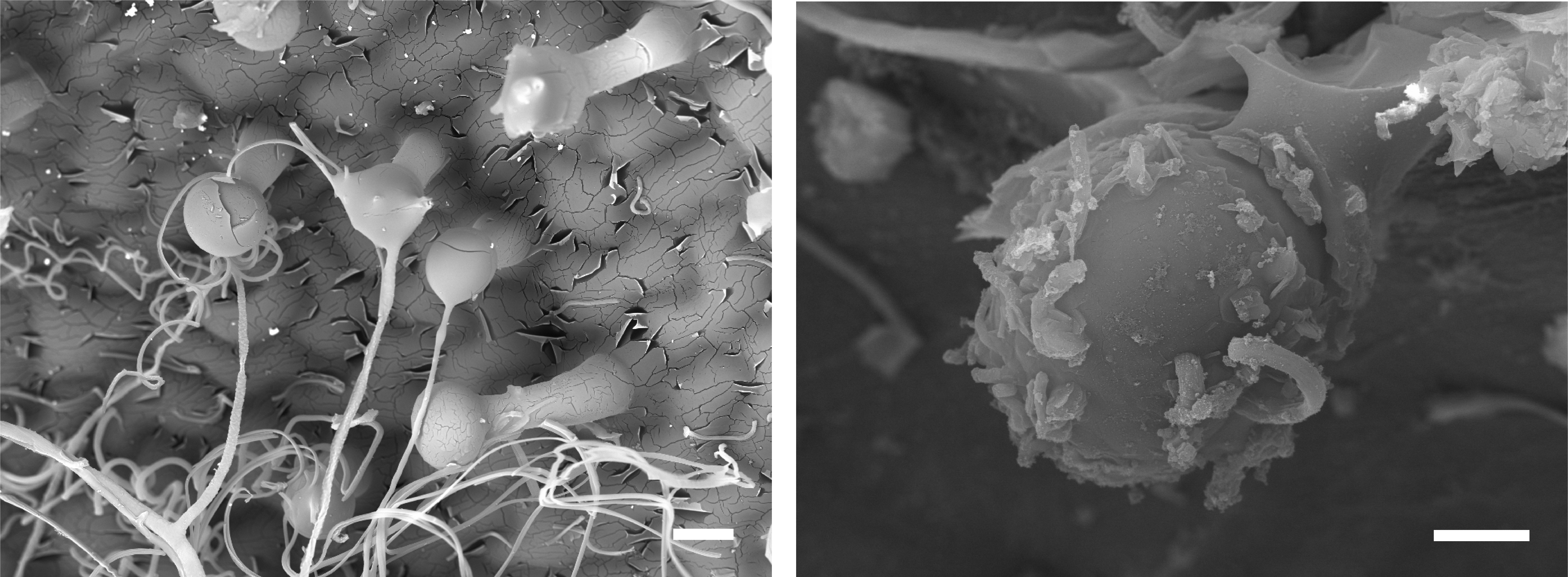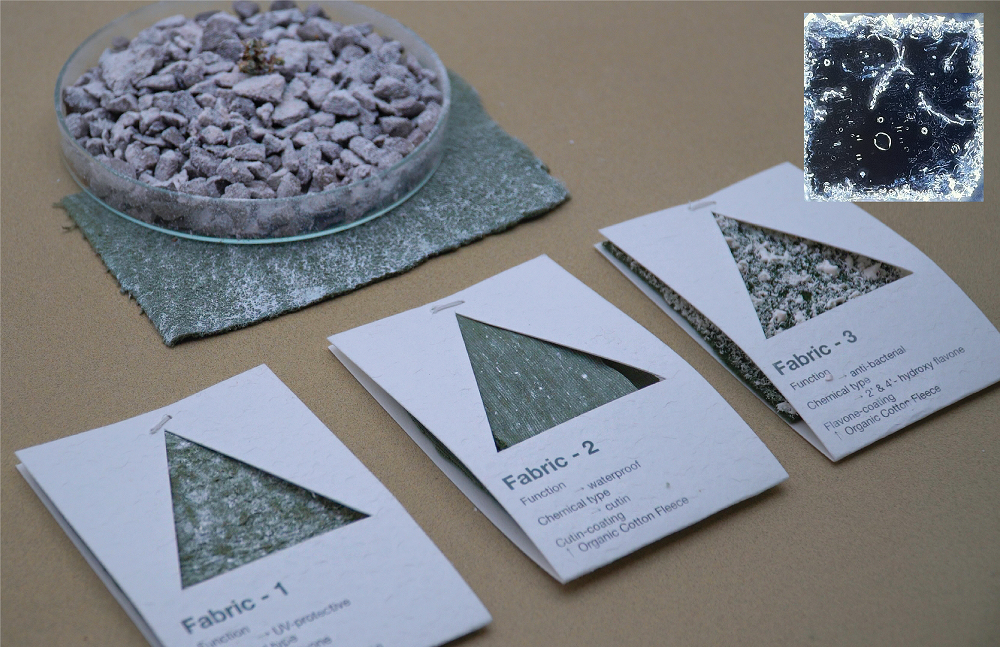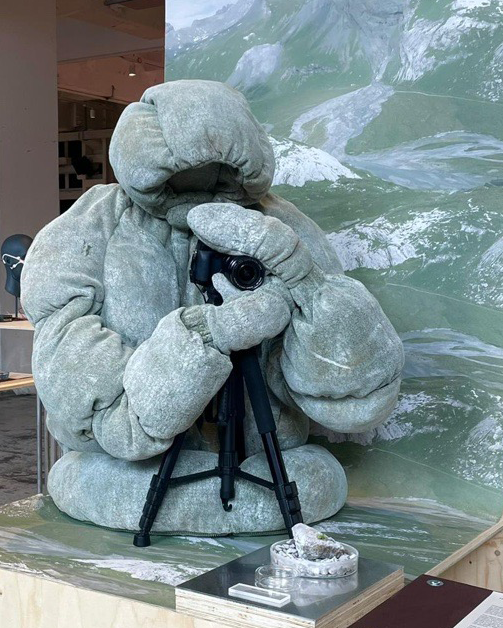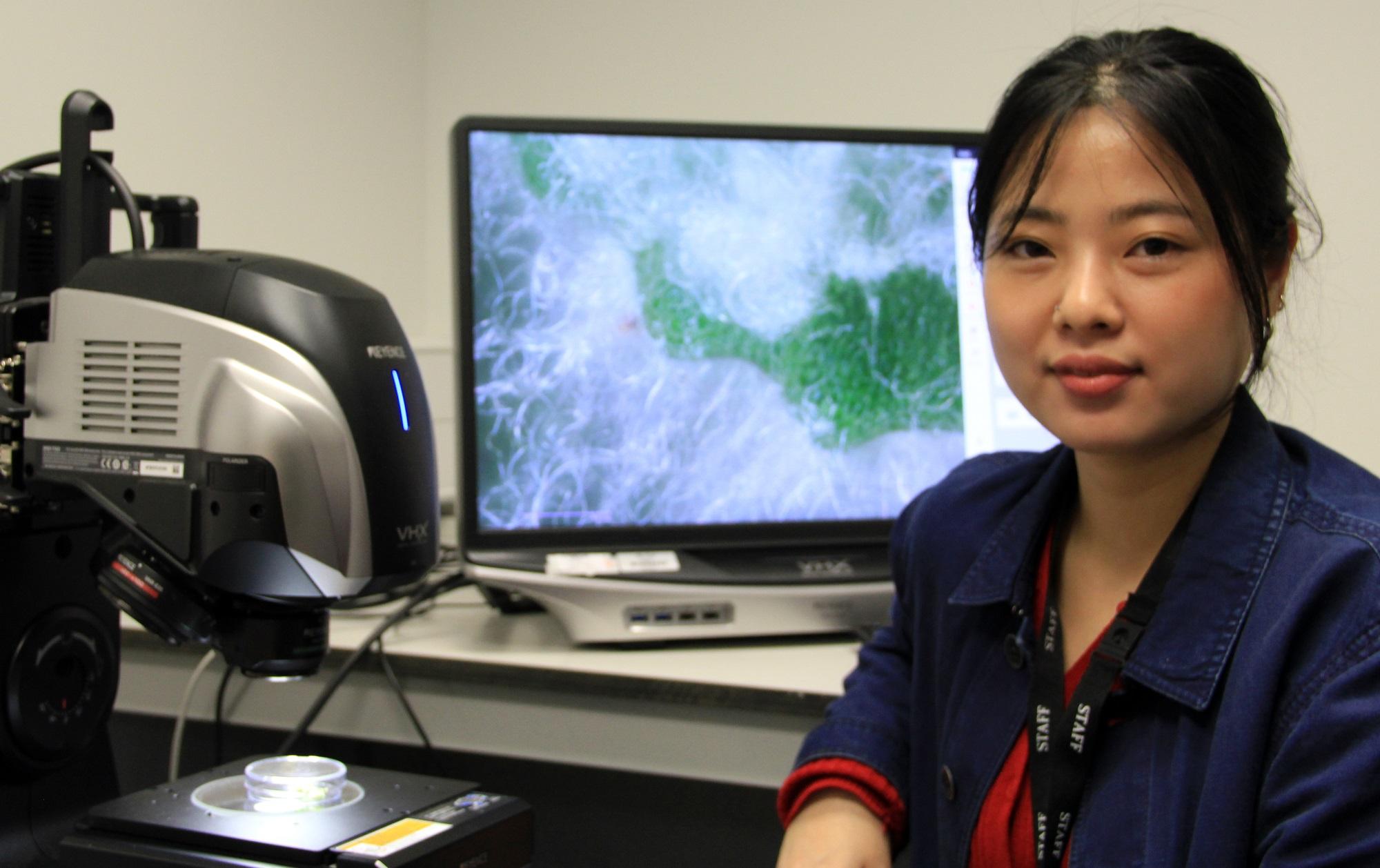
Jehnna Yang is exhibiting a novel plant-inspired plastic-free textile at the 2024 Milan Design Week. Yang is pictured examining the woolly farina of the alpine plant, Dionysia tapetodes, under a Keyence microscope at the Sainsbury Laboratory, Cambridge. Image by Harry Lusty.
Plastic-free mountaineering clothing inspired by alpine plants unveiled at Milan Design Week
Masters student Jehnna Yang is pushing the boundaries of sustainability and functionality with a plastic-free textile tailored for wildlife photographers and filmmakers working at high altitudes. The water-proof and UV-protective fabric was inspired by an alpine plant that spins its own wool.
Yang, who is studying a Master’s in Material Futures at Central Saint Martins, University of the Arts London, has designed and manufactured a unique waterproof and UV-protective textile for alpine clothing specifically crafted to seamlessly blend into natural surroundings – and that is completely plastic-free.
This departure from traditional plastic-based materials used in mountaineering clothing, was inspired by a family of tiny alpine plants that spin their own woolly protective coverings to help them survive extreme temperatures and exposure to high winds and UV on mountains.
The leaves of the small perennial cushion-shaped plant, Dionysia tapetodes, are covered in long silky fibres that resemble fine cobwebs called ‘woolly farina’. This fine wool is just 1-2 microns thick – far thinner than a human hair, which is about 75 microns.
Dionysia tapetodes, is an alpine plant in the primula family with yellow flowers in spring/summer and leaves covered in woolly farina. Images by Matthieu Bourdon and Simon Wallis.
Samples of this wool were analysed using advanced light and electron microscopes at the University of Cambridge’s plant science research institute Sainsbury Laboratory Cambridge University (SLCU), in collaboration with the Cambridge University Botanic Garden (CUBG). In their analysis, they discovered the wool was made of flavonoid compounds.
Scanning electron microscope images of woolly fibres on Dionysia tapetodes. Images by Raymond Wightman and Trevor Groves.
Read more: Alpine plant spins its own flavonoid wool
As a visiting student, Yang has been working with SLCU’s Microscopy Facilities team and researchers to develop plant-inspired textiles for the clothing industry. Over the past year they have examined the wool’s unique water-proof and UV-protective qualities and explored how the alpine plants manufacture the wool. Together they have developed and tested novel methods to replicate its manufacture.
Samples of the textiles that Jehnna Yang has been developing in collaboration with the Sainsbury Laboratory. Inset image is a close-up of the synthetically manufactured flavone wool fibres.
What truly sets Yang's alpine gear apart, however, is its revolutionary construction. Unlike conventional outdoor gear, which often relies heavily on plastic-based materials, every component of Yang's is biodegradable.
The puffer jacket with the flavonoid wool covering designed by Jehnna Yang, which is featured in exhibits at The Milan Design Week 2024.
SLCU Microscopy Facilities Manager, Raymond Wightman, said the wool could be recycled indefinitely. “In fact, the flavonoid-based wool can be dissolved and then re-manufactured for a totally new garment,” Dr Wightman said.
Gareth Evans and Christian Schwall have been experimenting with various manufacturing methods. Together the team has had success and is developing a patent for the manufacturing of the novel bio-fibre.
The Milan Design Week ends today.

